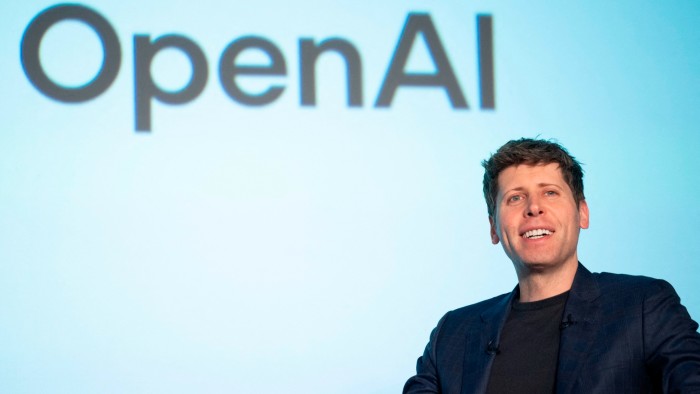Unlock the Editor’s Digest for free
Roula Khalaf, Editor of the FT, selects her favourite stories in this weekly newsletter.
OpenAI’s boundless ambition has become the touchstone of the generative artificial intelligence boom. It isn’t just the giant deals with which it has been shaking up the chip industry. If generative AI has the potential to change many aspects of business and daily life, then OpenAI intends to be the one leading the way.
It wants to own it all, from consumer apps such as chat and social networking to the tools companies use to build AI agents. The question is how much it can realistically bite off without a serious case of indigestion.
This feels particularly pressing in the enterprise market, selling AI-powered services to businesses and governments. Given the pressing need to find new sources of revenue to fund its huge data centre build-out, it’s not hard to see why OpenAI has alighted on this as its next big money-spinner.
OpenAI says tens of thousands of companies have been beating a path to its door, hoping to learn how to apply generative AI from the company behind ChatGPT. Why not welcome them with open arms? According to one person at the company, it has already signed one enterprise deal worth more than $1bn, a sign that it is starting to break into the big leagues.
For previous generations of tech start-ups experiencing hypergrowth, the answer to the “why not” question was about focus. Making the most of limited resources, both of capital and talent, meant ignoring some opportunities. The list of limited resources also includes graphics processing units, at least until giant projects get off the ground.
Like many companies riding the wave of a disruptive new technology, OpenAI appears to believe that this time it’s different. AI has made its own workers more productive, increasing the number of new things it can take on. And it may have a window of opportunity to rebuild important tech products and services before older rivals catch up.
A case in point is the internal software applications that OpenAI showed off late last month, sending a shockwave through the software investment world. The company is using these services, built on its large language models (LLMs), to do things such as filter sales leads and help its finance staff track and shape thousands of contracts under negotiation. Shares in companies that sell traditional software for such tasks, such as Docusign and HubSpot, dropped more than 10 per cent.
But winning in the enterprise business takes much more than a flashy demo: it’s about turning technology into services that can be configured, sold and supported in ways that produce measurable business results for customers. Google took years to learn that lesson in cloud computing, as it struggled to develop the different skills and culture required.
Enterprise tech companies also need to integrate with existing technologies and tap into their customers’ data sources. That means building broad ecosystems of partners around their products.
OpenAI has sent confusing signals when it comes to ecosystem-building. Its internal apps were widely seen as a bravura demonstration of what has been called “AI eats software” — an update of venture capitalist Marc Andreessen’s famous 2011 assertion that “software eats the world”. But a week later, at its developer day, the company chose to show a different face to the tech world, playing down the potential rivalry and demonstrating its technology working with companies such as HubSpot.
That brought temporary relief for software investors, though established sector companies such as Salesforce and Adobe have been slow to get a lift from AI. The more time that goes by before they show traction from their AI-powered services, the greater the danger that they will miss out on this boom, at the same time that their existing software businesses face disruption. But companies such as these still have large customer bases and often act as “systems of record”, the repositories of their customers’ most important data. They are likely to fight to defend their turf.
For OpenAI, the risk is that if others in the enterprise IT world can’t decide whether you’re an ally or a rival, they will choose to partner with someone else. That could weaken its bid to become the AI platform of choice, selling access to its LLMs to all-comers. Sooner or later, OpenAI will need to decide the limits of its ambition. But for now, as it looks for new ways to spin the raw materials of the generative AI revolution into gold, it seems to believe that everything is possible.




